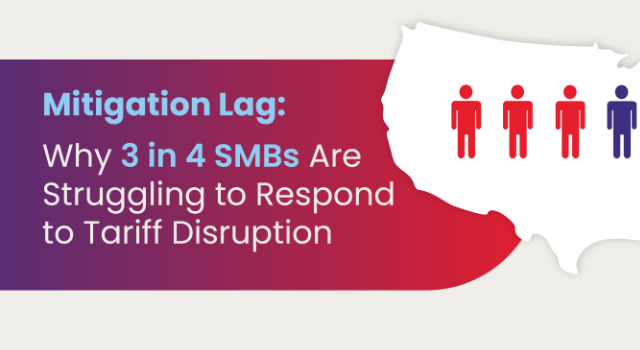Discover practical insights to boost profitability and meet customer demands through effective inventory planning.
Imagine seamlessly predicting demand, optimizing resources, and effortlessly meeting customer expectations. Welcome to effective inventory planning! Balancing supply and demand can boost efficiency and speed up inventory planning. Let’s dive in!
In this article, we’ll explore:
1 What is inventory planning?
Inventory planning is strategically managing and organizing stock or materials. It involves determining how much inventory to have on hand, when to order more, and how to balance the costs of holding inventory with the need to meet customer demand effectively.
2 Inventory planning vs. inventory control
Inventory planning is the strategic process, while inventory control involves the operational activities that ensure the actual inventory levels match the planned quantities.
- Inventory planning: Inventory planning is a strategic process that involves forecasting demand, setting safety stock levels, establishing reorder points, and determining order quantities. The aim is to balance having enough inventory to satisfy customer needs and avoiding excess stock that ties up capital and storage space.
- Inventory control: Inventory control is a more tactical and operational process that focuses on managing the day-to-day activities related to inventory. It involves tracking the actual inventory levels, monitoring stock movements, and making adjustments as necessary to align with the planned inventory levels. Inventory control aims to minimize costs associated with carrying inventory, including storage costs, obsolescence, and the opportunity cost of tied-up capital. This process involves order placement, fulfillment, stock counting, and inventory reconciliation. The goal is to ensure that the inventory remains aligned with the planned quantities and that any deviations are quickly sorted.
3 Goals and objectives of inventory planning
The goal of inventory planning is to strike the right balance between having enough stock to meet demand and making sure you don’t spend too much money on holding inventory.
The objectives support striking an inventory balance, including reducing inventory carrying costs, ensuring enough stock to meet demand, optimizing inventory orders, improving supplier relationships, and utilizing the right software to streamline processes and monitor your inventory KPIs.
Check out how Netstock effortlessly helps demand planners balance inventory.
4 Challenges in inventory planning
Demand planners are crucial in ensuring the right products are available in the right quantities at the right time. This may sound simple enough; however, many obstacles require careful consideration when planning inventory.
- Accurate demand planning: Fluctuations in market trends, unexpected shifts in customer preferences, and external factors like economic changes or global events can all impact demand, making precise forecasting difficult.
- Seasonality: Many products experience seasonal demand variations. Demand planners must anticipate these trends and adjust inventory levels accordingly. If not, this can result in excess inventory during off-seasons or stock-outs during peak periods.
- Lead time variability: Suppliers might not consistently deliver inventory in full and on time. Delays in shipments or variations in lead times can disrupt inventory plans, leading to stock-outs or excess inventory.
- Fluctuations in demand: Unpredictable spikes or drops in demand can disrupt inventory planning. Promotions, sudden market shifts, or even social media trends can lead to changes in demand that must be managed effectively.
- SKU proliferation: Managing many SKUs (stock-keeping units) can complicate inventory planning, making it challenging to allocate resources optimally.
- Cost constraints: Inventory costs include storage, handling, and potential obsolescence costs. Balancing cost-effectiveness with maintaining adequate inventory levels is a constant challenge.
- Inventory holding costs: Holding excess inventory ties up working capital and warehouse space.
- Obsolescence: Stock can become obsolete due to technological changes or market preferences. Managing aging inventory and preventing obsolescence-related losses is a significant challenge.
- Collaboration and Communication: Demand planners must collaborate closely with various departments, including sales, marketing, production, and procurement. Miscommunications or lack of coordination can lead to inaccurate inventory plans and missed opportunities.
- Introducing new products: Launching new products adds complexity. Demand forecasts might be less accurate without historical data, and there’s a risk of underestimating or overestimating initial demand.
- Multi-Channel sales: With the rise of omnichannel retail, demand planners must account for sales through various channels, such as brick-and-mortar stores, e-commerce platforms, and third-party retailers.
- Data quality: Effective demand planning relies heavily on accurate and up-to-date data. If the data used for forecasting is incomplete or unreliable, it can lead to inaccurate inventory decisions.
Successfully navigating these obstacles requires advanced analytical tools, strategic thinking, cross-functional collaboration, and an agile approach to inventory management.
5 Inventory planning methods and models
Inventory planning methods and models are necessary tools that demand planners use to optimize inventory levels and ensure efficient supply chain management.
Here’s a brief overview of some standard inventory planning methods and models:
- Economic Order Quantity: EOQ is a classic inventory model that calculates the optimal order quantity to minimize the costs of ordering and holding inventory. It considers factors such as order costs, holding costs, and demand rates to determine the ideal order size that minimizes costs.
- The Reorder Point model defines the inventory level at which a new order should be placed to replenish stock before it runs out. It considers lead time, average demand, and demand variability to determine the safety stock needed to avoid stock-outs during the lead time.
- Safety stock planning: Safety stock is extra inventory available to combat uncertainties in demand and lead time variability. Various methods, such as statistical techniques (e.g., the standard deviation of demand) and service level-based approaches, help calculate the appropriate safety stock level to prevent stock-outs.
- ABC analysis: This method categorizes inventory according to its value of importance and allows planners to focus on the stock items that matter the most to the business. “A” items are high-value items that need constant monitoring, “B” items are moderate-value items, and “C” items are low-value items that require less attention.
- Forecasting models: Various forecasting methods, such as time series analysis, exponential smoothing, and causal forecasting, help predict future demand based on historical data and relevant factors like seasonality and trends.
- Material Requirements Planning: This production and inventory planning system uses a bill of materials, lead times, and demand forecasts to determine the required materials and components for production. It ensures that materials are available when needed without excessive stockpiling.
6 How to leverage technology for inventory planning
Understanding your current reality.
Firstly, recognize your current planning solution’s limitations in optimizing inventory. This is very important. If you only manage inventory using spreadsheets, you won’t have the visibility or predictable insights to balance your inventory planning. Using an ERP solution alone is an excellent solution to help businesses streamline and manage core processes. However, it’s not designed to optimize inventory to the level you need to balance inventory and costs.
Using technology.
- Inventory management software offers real-time tracking, demand forecasting, and analytics, enabling you to make data-driven decisions, optimize stock levels, and reduce carrying costs.
- IoT devices and sensors monitor inventory conditions and automate reordering processes when the stock reaches predefined thresholds.
- Artificial intelligence and machine learning algorithms can further enhance your ability to predict demand patterns and adapt to market fluctuations.
- Data analytics and reporting tools will provide necessary insights into your inventory performance. These tools can help identify slow-moving or obsolete stock, assess supplier performance, and optimize lead times.
- Supplier collaboration platforms connect you with your suppliers in real-time, facilitating better communication, demand sharing, and reduced lead time. By sharing demand forecasts and inventory data with suppliers, you can streamline replenishment and ensure you have the right products at the right time.
Integrating technological solutions into your inventory planning strategy will streamline operations, improve customer satisfaction, and ensure you remain one step ahead of your competitors.
7 How Netstock accelerates inventory planning
Netstock, designed by inventory people for inventory people, will optimize your inventory planning by integrating with leading ERPs and leveraging your ERP data to provide the visibility you need to save time and allocate the right amount of resources to the right amount of inventory needed to meet demand.
Gain visibility of your inventory holding: Netstock lets you see your inventory KPIs in a single easy-to-use dashboard where you can quickly see your stock holding, what’s in excess, and what’s potentially going to stock out.
Automatically classify inventory to allocate time and resources: Netstock automatically classifies every stock item according to its value and velocity so you can focus on 20% of the stock that brings in 80% of your sales.
Improve demand planning and extend your planning 24 months in advance: with this functionality, you can manage extended supplier lead times, create a two-year forecast for your seasonal items and use your look-forward days to fill containers or plan supplier shut-downs.
Adjust safety stock levels in line with supplier lead time: When the stock level reaches its minimum level, Netstock automatically replenish the stock to fill the forecasted demand, taking into account any changes in supply to ensure that the target fill rate is achieved.
Measure supplier performance: With the ability to measure and monitor supplier performance, you’re able to automatically adjust planning to meet demand. With reliable supplier data, you optimize your supplier network and quickly improve lead times.




